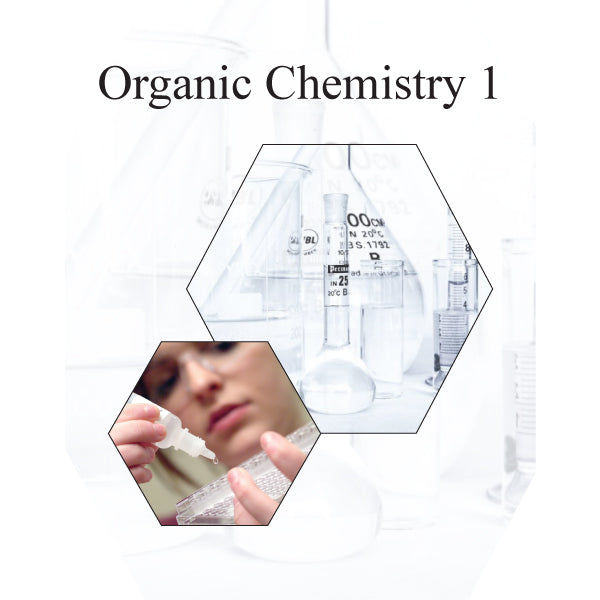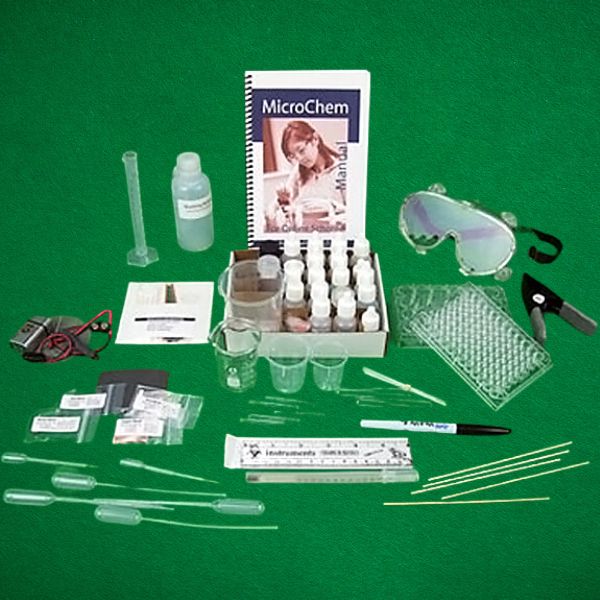Quality Science Labs, LLC offers innovative laboratory curricula and corresponding kits. Our kits can turn the kitchen into a homeschool laboratory or enhance the lab experience for schools with limited resources.
MicroChem Kit Standard Edition
Description
MicroChem Kit
- A Beka CHEMISTRY Precision & Design
- 2nd Edition ACE Ministries School of Tomorrow Chemistry Series, 1996 Edition
- Alpha Omega Publications, Science Grade 11, Chemistry
- Apologia (Wile) Exploring Creation with Chemistry, 2nd Edition
- BJU Press, CHEMISTRY for Christian Schools, 2nd Edition
- Christian Light's Science 1100 Chemistry
- Glencoe Science, Chemistry: Matter and Change
1. Paper Chromatography
2. Melting Points, Super Cooling
3. Electrical Conductivity of Several Solutions
4. Mole Ratios
5. Double Replacement Reactions
6. Oxidation-Reduction
7. Decomposition
8. Boyle's Law
9. Charles's Law
10. Solubility Product Constant
11. PH and PH Indicators
12. A Microscale Titration
13. Molar Mass by Titration
14. A Buffer Solution
15. Reaction Rates: The Effect of Concentration
16. Reaction Rates: The Effect of Temperature
17. Electrochemistry: Galvanic Cells
Contents of the kit-
Manual
Battery, 9-volt
Beaker, glass, 50 mL
Beakers, plastic: 15, 30, 150 mL
Capillary tubes
Chromatography paper
Conductivity apparatus
Cotton swabs
Electrolysis device
Graduated cylinder, 10 mL, plastic
Graph paper (pgs 11-12, 16, 20, 24, 40, 45-46, 50, 54, 68, 78, 82, 87-88)
Measuring spoon, 1.0 mL
Pen, black, felt-tip, water-soluble ink
Pipets, graduated, mini, and thin
Reaction plate, 24-well
Reaction plate, 96-well
Rubber bands
Ruler, 15 cm
Safety goggles
Sandpaper, fine
Spring clamp
Test tubes: 6 X 50 mm, 12 X 75 mm
Thermometer, -10° to 102° C
Toothpicks, plastic
Washing bottle
Wire
Wire gauze
Wood splints
Copper
Iron
Nickel
Zinc
Acetic acid, 0.1 M
Bromophenol blue indicator
Calcium nitrate, 0.1 M
Copper nitrate. 0.1 M
Distilled water
Glycerin
Hydrochloric acid, 0.1 M
Iron nitrate, 0.1 M
Nickel nitrate, 0.1 M
Phenolphthalein indicator paper
Potassium hydroxide, 0.1 M
Potassium iodide, 0.1 M
Sodium acetate, 0.1 M
Sodium hydroxide, 0.1 M
Sodium oxalate, 0.1 M
Sodium sulfate, 0.1 M
Sodium thiosulfate, 0.1 M
Universal indicator paper
Zinc nitrate, 0.1 M
Magnesium sulfate
Potassium hydrogen phthalate
Cetyl alcohol
Palmitic acid
Related Products
Advanced MicroChem Kit
- $299.30
BCC 1814 Organic Chemistry 1
- $249.63
MicroChem Kit for Online Schools
- $193.09





